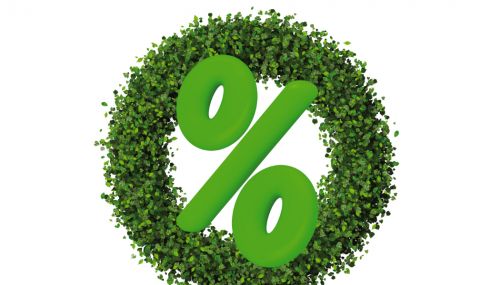All
Biodiesel 2016 – Strength & Certainty
by Michael Devine, AMERIgreen Energy

In 2015, the U.S. biodiesel market showed itself to be as unpredictable as we have seen in several years. Even with its unpredictability, the net effect was an industry that was aggressively determined and tenacious as ever, navigating the uncertainties of the absence of the $1.00 per gallon blenders tax credit, as well as an unknown Renewable Volume Obligations (RVO) under the Renewable Fuels Standard (RFS).
Although most would have hoped for more certainty and less market volatility, this past year was met with complex challenges on multiple fronts. The challenges included the continued slide of the barrel of crude oil, which brought down distillates prices and commodities in general. These commodity declines led to a market scenario in which blend margins for biodiesel became more challenging as we moved into the beginning of the current heating season.
What became apparent to us at AMERIgreen this summer, as the oil markets continued to erode, was that the ability of biodiesel to produce blend margins placed further reliance on the tax credit, RINs and various other incentives—all of which lacked clearly defined certainty until the very end of the year.
EPA Settles RFS Questions
The first signal of clarity came with the Renewable Volume Obligation (RVO) figures, which increased the mandated renewable fuels volumes released by the U.S. Environmental Protection Agency (EPA) on November 30. The announcement provided tremendous support to the biodiesel industry, as the annual growth in mandated volumes provided a reasonable escalation for domestic production. The EPA’s decision increases the Biomass Based Diesel category to 1.9 billion gallons in 2016, nearly doubling the 1 billion gallon statutory requirement and above the 1.8 billion gallon target in EPA’s last Renewable Fuels Standard proposal. In 2017, the RVO would increase to 2 billion gallons. The notable importance of these increases to mandated gallons is the certainty of the growth of the biodiesel industry for the heating oil marketer: In essence, the Genie is not going back in the bottle.
The second critical provision, which provided for greater market certainty, was the passage of the $1.00 per gallon blenders tax credit for biodiesel. The biodiesel tax credit will be retroactive for 2015 and extend through 2016. It will remain in its original form as a blenders tax credit. This credit took on an interesting twist in 2015 as the possibility of a change to the Producer’s Tax Credit continued to gain momentum right up until the final days of the year. Although the change to a Producers Tax Credit has been in the works since 2008, the change had previously not seemed likely to occur given the tendency of Congress to consistently push the biodiesel tax credit in a larger tax extenders package.
The matter is settled through 2016 with the credit remaining at the blender level, but the jury is still out, in my humble opinion, as to which option—BTC or PTC—will best serve heating oil marketers going forward. While valid arguments have been made by some in the petroleum world that the imported biodiesel provides additional supply optionality to the East Coast and with it, more competitive economics, we are not as inclined to agree quite yet.
As stated above, the challenge will be to continue to be able to provide strong blend margins to the heating oil marketer at a time when we are seeing the NYMEX ULSD contract price of heating oil fall under $1.10 per gallon. To do this, the D4 & D5 category RINs are going to need to remain strong and continue to strengthen in 2016 to be able to maintain blend margins. We would argue that if there is a huge influx of foreign product that hits the U.S. shores in 2016, there could be an oversupplied market, causing an overall weakness in the D4 RINs category, thus reducing favorable blending margins.
Credit Could Come Under Scrutiny
The other area of concern as we move into the later part of the year will be how Speaker of the House Paul Ryan and the Finance and Budget Committees will view the “tax extenders” moving forward. All reports indicate a change in philosophy for the provisions currently included in the tax extenders package; they will likely all be placed under the microscope on an individual basis and re-evaluated moving forward. We would argue that it might look unseemly from a policy standpoint to provide U.S. taxpayer dollars to fund tax incentives to foreign biodiesel production.
Bioheat® marketing is exploding in the Mid-Atlantic, NYC Tri-State area and New England regions due to the environmental benefits, fuel performance properties and, most importantly, positive new value-added marketing benefits to the Oilheat consumer.
We collectively find ourselves in a very bright moment as heating oil marketers so far this season. With the exception of a weak start to the heating season, the price per gallon of oil has plummeted to a point where our capital lines have been less taxed, our margins should have improved, and we have experienced far less pricing pushback from our customers. Here’s wishing all of you a safe, healthy and prosperous New Year in 2016.
Please feel free to reach out to us if you have any questions or if we can help to provide any additional insights regarding biodiesel and Bioheat®.
Related Posts
 How to Set Your Business Apart with Renewable Propane
How to Set Your Business Apart with Renewable Propane
Posted on October 16, 2025
 EIA Report: Biodiesel and Renewable Diesel Imports Fall Sharply
EIA Report: Biodiesel and Renewable Diesel Imports Fall Sharply
Posted on October 16, 2025
 Northeast Liquid Fuel Providers Put Higher Bioblends in Focus
Northeast Liquid Fuel Providers Put Higher Bioblends in Focus
Posted on August 19, 2025
 Lower Carbon Lineup Puts Businesses on the Path to Net Zero Goals
Lower Carbon Lineup Puts Businesses on the Path to Net Zero Goals
Posted on August 18, 2025
Enter your email to receive important news and article updates.
